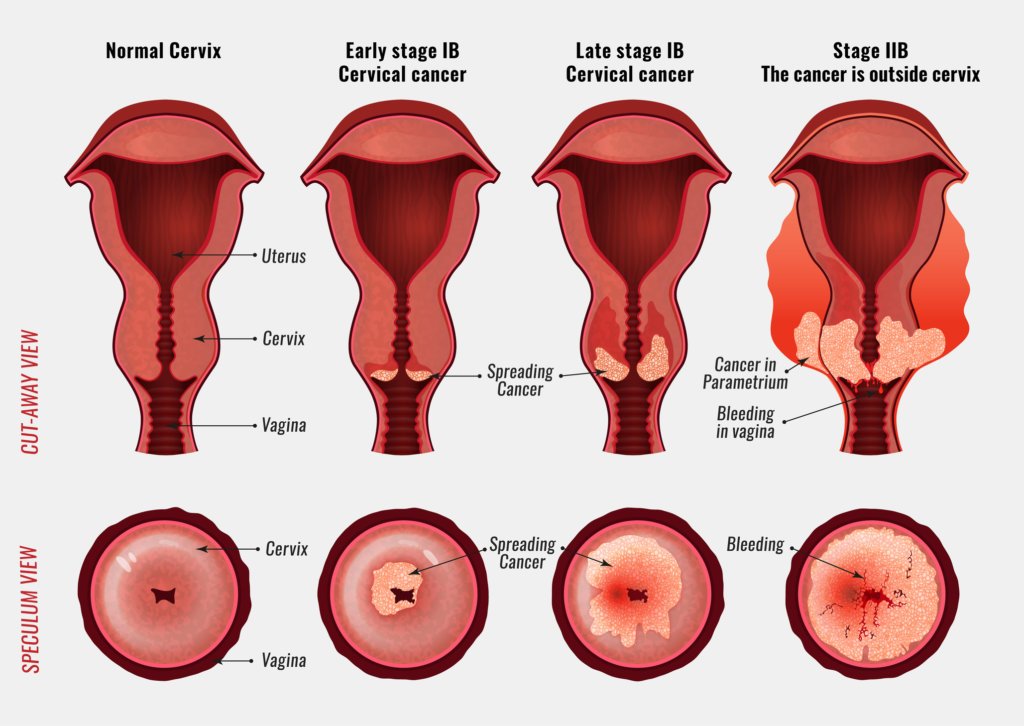Cervical Dysplasia And Its Complications
- 0.1 Basic Classification of Cervical Dysplasia
- 0.2 Cervical Dysplasia with HPV
- 0.3 How often Cervical Dysplasia Occurs?
- 0.4 What are the Symptoms of Cervical Dysplasia?
- 0.5 What are the Causes of Cervical Dysplasia?
- 0.6 What are the Risk Factors for Cervical Dysplasia?
- 0.7 What is the Diagnosis Process of Cervical Dysplasia?
- 0.8 What are the Treatments for Cervical Dysplasia?
- 0.9 What are the Preventions of Cervical Dysplasia?
- 0.10 What Questions You Should Ask from the Doctor?
- 0.11 How can you find treatment for Cervical Dysplasia?
- 1 FAQs
Cervical dysplasia is a gynecology-related problem that occurs in women. It appears due to abnormal or unusual cell growth in the areas of the cervix between the vagina and uterus and affects tissues or cells in that location.
Another name for this problem is cervical intraepithelial neoplasia or CIN. It is a strict sexually transmitted problem. It is transmitted in the form of a viral disease having the pathogen human papillomavirus or known as (HPV).
It normally shows no abrupt symptoms. The general test to check this problem is a test which is known as a pap test. The process of prognosis is fabulous for such females who have been diagnosed with cervical dysplasia and receive certain medication.
It remains undiagnosed in most women affected by it and may cause cancer. In many cases, this problem is get resolved without any medical treatment. In severe cases, the sudden removal of abnormal outgrowth is necessary.
This article is all about cervical dysplasia and all complications associated with it along with sufficient treatment. In case you feel any emergency condition, feel free to contact the specialized health care of Marham. PK.
Basic Classification of Cervical Dysplasia
Cervical dysplasia is often classified from mild to severe. It always depends upon the time of cells to be in the cervix.
The basic classification scale is classified into three categories:
- CIN 1: It describes the unusual formation of cells that affects almost one-third portion of the thick wall of epithelium.
- CIN 2: It refers to the abnormal formation of cells affecting an almost two-thirds portion of the thick wall of the epithelium.
- CIN 3: It tells about the development of the abnormal cell development that affects more than two-third portion of the wall of epithelium.
CIN 1 is the least first stage of suffering from cervical dysplasia that shows the least chances of converting into cancer. The CIN 2 and CIN 3 are the worst to be converted into cancer therefore they should be checked properly.
Cervical Dysplasia with HPV
Cervical dysplasia and having HPV are two different conditions. You may have cervical dysplasia and also HPV but they affect you separately. There are risks that if you fulfill the following conditions, you will develop both problems:
- Being over-aged or above 55
- Being a chain smoker
- Excessive alcohol consumption
- Having a week’s immune system
How often Cervical Dysplasia Occurs?
In the US, almost 250,000 to 1 million young females are a victim within the age of 25 to 35. It may be a serious problem in childbearing women. A person who has more than one sex partner is a higher chance of suffering from this lethal problem.
What are the Symptoms of Cervical Dysplasia?
There are no usual symptoms of cervical dysplasia. Your doctor can only tell whether you are suffering from cervical dysplasia or not after the characterization of abnormal tissue cells.
What are the Causes of Cervical Dysplasia?
There are many causes of cervical dysplasia. The most obvious effect is the presence of HPV already in the victim. It affects women mostly in-between the ages of 25-30.
Having an abusive sexual activity is also a major cause accompanying this problem. It is mainly a sexually transmitted disease. There are other factors also that make your immune system weak which increases the chances of having this problem.
What are the Risk Factors for Cervical Dysplasia?
The risk factors for cervical dysplasia are many. It ranges from mild to severe. The common risk factors include:
- Having sex with a person who has many sex partners.
- Sex at an early age
- Having sexual activity with multiple partners
- Having positive HPV is at more risk of developing cervical dysplasia.
What is the Diagnosis Process of Cervical Dysplasia?
A Pap test is usually used to diagnose various problems in women. It tells whether you are a victim of cervical dysplasia or not. The Pap test can tell about the degree of severity of cervical dysplasia.
There are other tests than the Pap test that is important:
- Repeating a Pap test
- Colposcopy
- Endocervical Curettage
- Cone biopsy
- HPV test
What are the Treatments for Cervical Dysplasia?
There are several treatments available for cervical dysplasia. It includes:
- Cryosurgery
- Laser surgery
- Electrocauterization
- Pap test
What are the Preventions of Cervical Dysplasia?
The best prevention that one can take is to go for safe sex. Most of the people that suffer from this problem have multiple sex partners. Always having protected sex is the best prevention.
What Questions You Should Ask from the Doctor?
- Should I need an HPV vaccination?
- What is the degree of severity of my Cervical Dysplasia?
- Is I at high risk of Cervical Dysplasia?
- Will it have any effect on my pregnancy?
- What is the necessary prevention?
- What is the prescribed treatment?
How can you find treatment for Cervical Dysplasia?
You can consult the experienced doctors of Marham. You will get satisfactory treatment. Our doctors are experts at doing their job. You can check the expert team of Marham and book your appointment.
FAQs
Is cervical dysplasia serious?
Cervical dysplasia is a common problem in women. Its seriousness depends upon the time of diagnosis. You cannot confuse it with cancer at the very severe stage it can turn into cancer but it happens in very rare cases. It is just abnormal developments of cells in the cervix area.
Does dysplasia mean cancer?
It is a mysterious disease and is normally described as abnormal cell development in the tissues of the cervix. It is not cancer at all and at any stage, it turns into cancer owing to duplication with some other disease. It can vary from mild to severe and the vigorous cells can be seen in the microscope.
How do you get cervical dysplasia?
Cervical dysplasia is an unusual condition that causes the development of abnormal growth of cells in the tissues and cells of the cervix. It is a sexually transmitted disease. It occurs due to a virus known as Human Papillomavirus or HPV.

















